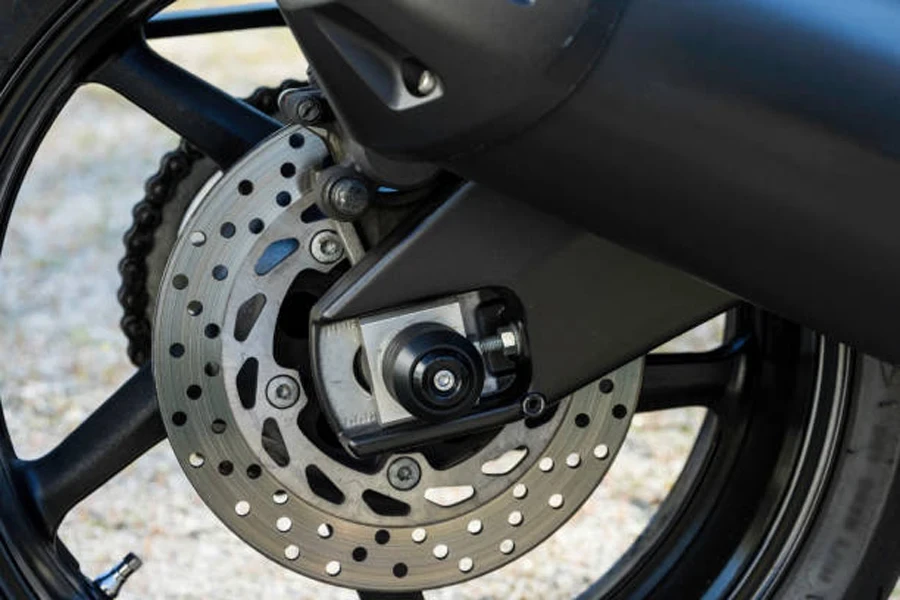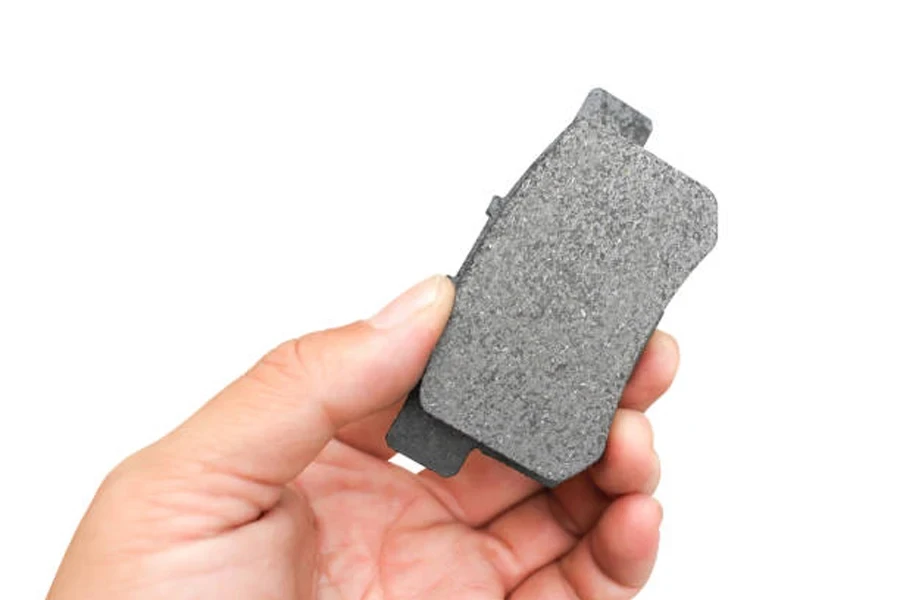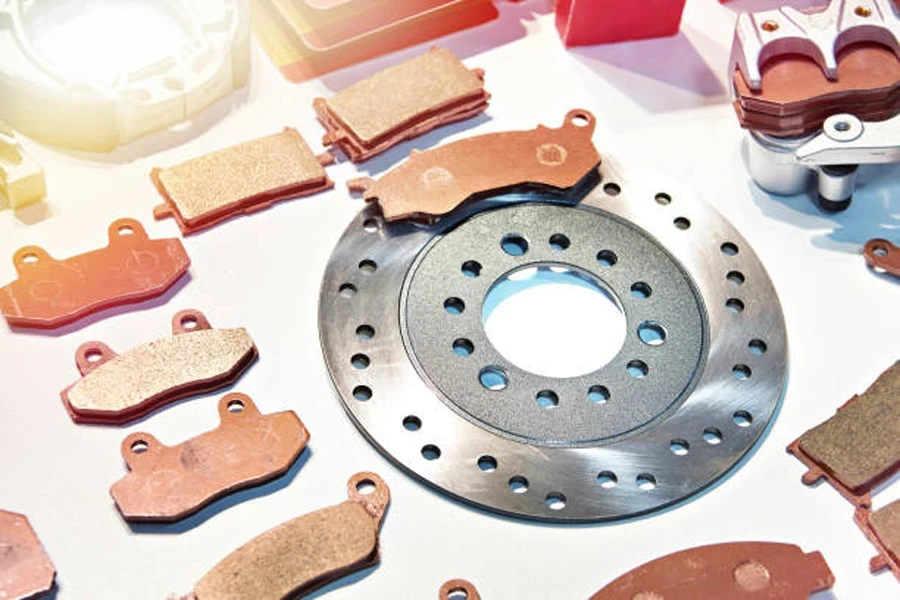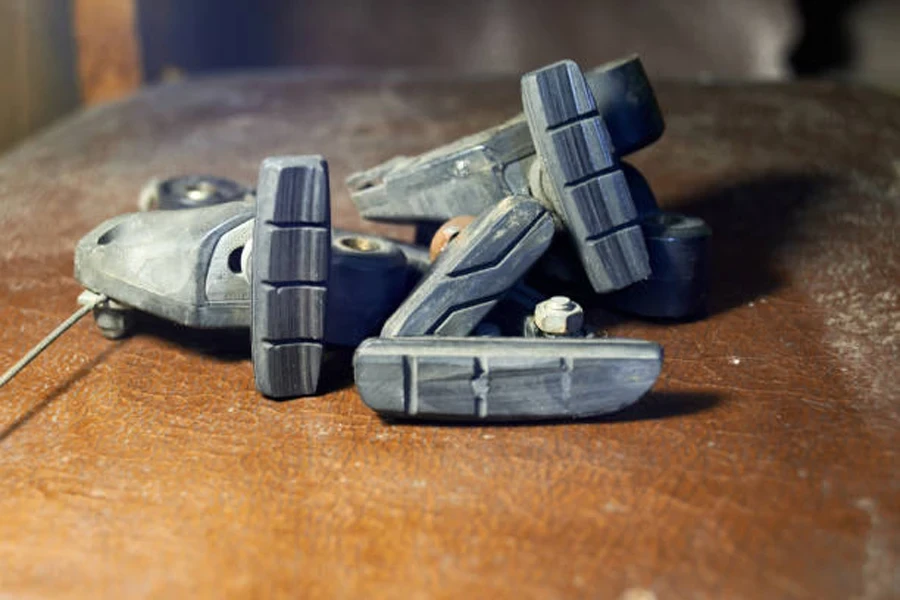Table of Contents
● Introduction
● Market overview
● Different types of motorcycle brake pads and their features
● Key factors to consider when selecting brake pads
● Conclusion
Introduction
The brake pads of a motorcycle are very important as they help determine the safety of a rider or the performance they are likely to have on the road. The right brake pad can greatly enhance the braking system, increasing the bike’s control and response to the rider’s input. The type of brake pad chosen, whether sintered, organic, or semi-sintered, affects not only the braking but also the wear and tear of the pads and the rotors. High-performance pads are much more durable, while the softer pads create less noise and provide a smoother ride. The right brake pad ensures safety and performance, is affordable to every rider, and ensures that the right one is chosen.

Market overview
In 2024, the global motorcycle brake pads market is valued at USD 1.4 billion and is projected to grow to USD 2.4 billion by 2031 at a Compound Annual Growth Rate (CAGR) of 5.9%, reports Market Research Intellect. This expansion is attributable to the enhancement in motorcycle usage in the urban environment as they are economical and effective means of transport. New-age brake pad materials, including the sintered and ceramic pads, have immensely enhanced the performance and safety of the brakes.
The increasing concern for the protection of vehicles has created a high demand for brake components. The growth of the OEM and the aftermarket segment has also played a part in the overall development of the market. Market Research Intellect also states that the Asia-Pacific region leads the market, capturing over 40% of the global sales as the use of motorcycles has grown dramatically in countries such as China, India, and Indonesia. North America and Europe are in the same sequence, with a combined share of about 30% due to the rising demand for premium motorcycles and high-end braking systems. In the aftermarket segment, the brake pad market is projected to attain a value of USD 600 million in 2024, as many riders are turning towards aftermarket products and services, including changing parts and frequent maintenance. In addition, ceramic and semi-metallic compounds are gradually being adopted in both regions to meet the challenges of enhanced performance and durability in all terrains.

Different types of motorcycle brake pads and their features
Motorcycle brake pads come in different types designed to meet certain riding conditions, performance levels, and durability. Sintered brake pads are made of metal powder, compacted, and heated under high pressure to form the pads. This makes them very strong and able to withstand high temperatures, which makes them suitable for high-performance conditions such as racing or use in city braking. Sintered pads are frequently used, have high friction coefficients, and provide good bite and braking effectiveness over various temperatures. However, they tend to wear down rotors more quickly because they have a harder compound, create more noise when braking, and are more costly. However, they are the most frequently used type of brake pads on motorcycles as original equipment because they have a wide range of applications and can be used in any weather condition, including rainy or rough terrain.
Organic brake pads made of fibers, resins, and fillers are the opposite of sintered pads in composition and feel. It is quieter and offers a more linear feel than a sintered brake, which is preferable for those who want more control over the braking process. Organic pads are particularly effective at not harming the brake discs as they cause less wear to the rotors than sintered pads. It is also relatively cheaper to maintain, thus making it a perfect option for normal riders or those who do not ride at high speeds.
Semi-sintered brake pads are middle-range pads made of 30% sintered compound and 70% organic compound. This hybrid construction provides the semi-sintered pads with the durability and heat resistance of the sintered pads, and at the same time, it will have a softer feel and be less likely to wear down the rotors as the organic pads. Semi-sintered pads are most often used by riders who are in the process of choosing between the two, that is, between the best durability and the most comfortable touch. These pads are also known to produce moderate noise during usage and are better than organic pads, especially in wet conditions.

Ceramic-composite pads are the best option for enhancing the braking system. These pads are made from high-strength ceramic fibers and non-ferrous metal filaments and minimize rotor wear without compromising braking strength. Ceramic pads are the best as they reduce noise, especially when braking hard, and they are heat resistant. Hence, they are suitable for long rides where the driver has to be conscious of their speed. These pads are especially efficient in maintaining braking power regardless of the temperature, which makes them suitable for use in different climates and terrains, according to Brakecrafters.
However, the ceramic pads are quite expensive and may not be easily available for all motorcycle models, thus limiting their use to certain bikes and performance requirements. The various types of brake pads have their particular advantages and disadvantages, and the selection depends on the specific conditions, needs, and preferences of a rider, whether it is commuting, racing, or any other activity. The proper brake pad can enhance the braking performance, control, and sensitivity of the vehicle on the road. It will also help replace the rotors and other braking system parts with minimal frequency and at a lower cost.

Key factors to consider when selecting brake pads
The first factor to consider regarding motorcycle brake pads is the riding conditions. Organics or semi-sintered pads are ideal for standard use around the city or urban environment where there is a lot of stopping and starting. They have a softer composition than sintered pads and provide smoother braking with less rotor wear. These pads are especially suitable for daily use where braking is not aggressive, according to MotoUsher.
On the other hand, ceramic or sintered pads are ideal for off-road use. These pads are made to withstand the worst conditions of off-road use, higher temperatures, and rough braking as they provide longer wear. Riders who experience chalky terrains or carry heavy loads should opt for sintered pads since they offer better heat resistance and stopping abilities.
It is also important to consider the performance requirements of the brake pad selection. High-speed riders, for example, those on sports bikes or racers, will greatly benefit from using sintered pads. These pads provide a good initial feel and linearity and are therefore recommended for high-intensity use where speed control is of significance, according to RideApart.
Lovers of riding and those who are likely to make much use of the breaks and are looking for a comfortable and quiet ride should opt for organic or semi-sintered pads. These pads offer a more seamless braking experience and help preserve the rotors; therefore, they are recommended for general use where braking is not as aggressive.
Brake rotor compatibility is another critical consideration. Not all rotors can support the harder compounds used in sintered or ceramic pads. According to Brakecrafters, using sintered pads on rotors that are not meant to be used with sintered pads will lead to faster wear and may even damage the rotors. One has to find out whether the bike’s rotors can accommodate the type of brake pads that one wants to use. Although organic pads are softer, they are easier on the rotors than sintered and ceramic pads and may require stiffer rotors to cater to higher friction and heat.
Regarding the cost vs. longevity of brake pads, riders should consider how often they will need to change the pads and what they will have to pay for it. Organics are cheaper but do not last as long and may need to be changed more often than other types. Sintered and ceramic pads are more expensive but last longer due to their durability. They are, therefore, advisable for people needing pads that can be used often, according to MotoUsher.

Conclusion
Selecting the right motorcycle brake pad is important to enhance the rider’s safety and the road’s performance. If you are a commuter, an off-road rider, or a racer, the pad you choose has to be right for you and your specific needs, be it for daily use, high speeds, or long distances. The right brake pad not only enhances the stopping ability and control but also helps prolong the rotors’ and braking system’s life, thus making the ride safer in the long run.




